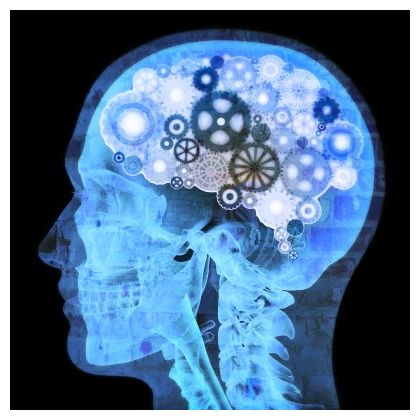
© GreenMedInfo
Last month, an article was published in the interdisciplinary journal
Langmuir titled, "Patterning of Antibodies Using Flexographic Printing," which read like a chapter out of a science fiction novel:
Antibodies were patterned onto flexible plastic films using the flexographic printing process...Printing antibody features such as dots, squares, text, and fine lines were reproduced effectively. Furthermore, this process could be easily adapted for printing of other biological materials, including, but not limited to, enzymes, DNA, proteins, aptamers, and cells.[1]
This concept -
and now reality - of creating
plastic antibodies and associated biological components, to be used for "medicinal purposes" within the human organism, is technically a form of cybernetics; that is, combining artificial technologies and biological systems to create human-machine hybrids (i.e. cyborgs) with enhanced abilities. While the
trans-humanistic ethos which subtends cybernetic technology is, for lack of a better word,
creepy, the successes of synthetic antibodies have recently been lauded in both the experimental literature and
mainstream media, alike.
A 2010 study published in the
Journal of the American Chemical Society titled, "Recognition, neutralization, and clearance of target peptides in the bloodstream of living mice by molecularly imprinted polymer nanoparticles: a plastic antibody," reported on the ability of
plastic antibodies to completely neutralize a toxic peptide in the bloodstream of living mice:
We report that simple, synthetic organic polymer nanoparticles (NPs) can capture and clear a target peptide toxin in the bloodstream of living mice. The protein-sized polymer nanoparticles, with a binding affinity and selectivity comparable to those of natural antibodies, were prepared by combining a functional monomer optimization strategy with molecular-imprinting nanoparticle synthesis. As a result of binding and removal of melittin by NPs in vivo, the mortality and peripheral toxic symptoms due to melittin were significantly diminished. In vivo imaging of the polymer nanoparticles (or"plastic antibodies") established that the NPs accelerate clearance of the peptide from blood and accumulate in the liver. Coupled with their biocompatibility and nontoxic characteristics, plastic antibodies offer the potential for neutralizing a wide range of biomacromolecules in vivo.[2]
The unintended, adverse effects of injecting plastic antibodies into animals or humans in order to improve on, optimize or replace natural immune processes, are likely immense. Plastic, after all, is a derivative of crude oil, and lacks biocompatibility with most living systems (being therefore xenobiotic), excluding rare forms of bacteria and fungi. It is likely that if we continue to see overwhelmingly positive reports such as this in the animal model, it will only be a matter of time until human clinical trials begin, and FDA approval becomes a very real possibility.












Comment: Read the following articles to better understand how the 'microbiome' affects human health and disease:
Are Gut Bacteria In Charge?
Mind-Gut Connection: Why Intestinal Bacteria May Have Important Effects on Your Brain
Diet And Intestinal Bacteria Linked With Healthier Immune Systems
Hacking Your Body's Bacteria for Better Health
Microbes in Our Gut Regulate Genes That Control Obesity and Inflammation